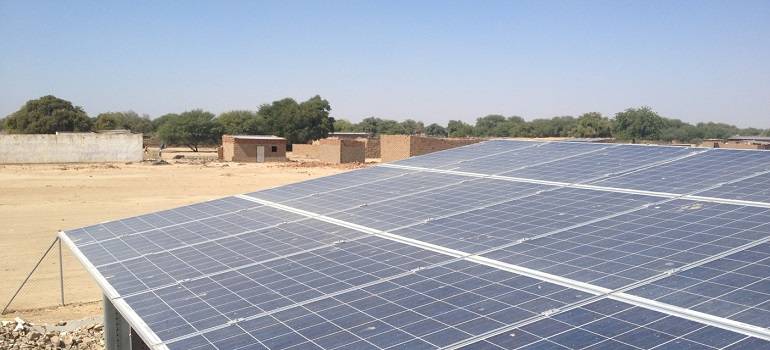
BHEL Haridwar is setting up a 5 MW grid connected solar plant near its 132 KV sub-station, in a bid to encourage use of sustainable energy through non-conventional resources.
According to a report General manager (in-charge) HEEP Sanjay Gulati and general manager (in-charge) CFFP Rajiv Mehra performed ‘Bhoomi Pujan’ for the ambitious 5MW solar power project in Haridwar on Monday. Speaking to the pioneer Gulati said that sustainable energy produced from non-conventional resources is the future of power in India.
“Preservation of our environment is the need of the hour and enhanced focus on production of green energy is the best way out. Government of India is also promoting renewable energy infrastructure in the country in a big way,” he said. Rajiv Mehra on the other hand said that the scenario for renewable energy, specifically solar is favorable in the country, so decision of setting up the 5MW solar plant comes at right time.
According to the report, once commissioned, this plant would generate about 92 lack units of electricity in a year which will meet about 20 percent of electricity demand of HEEP unit of BHEL Hardwar, resulting in a reduction in its annual electricity bill by approximately Rs 4.75 crore.
ALSO READ: Singulus wins Heterojunction Solar Cells (HJT) order
Solar Panels, Power Conditioning Units, Sun trackers and Vacuum Circuit Breakers needed for the solar power plant will be sourced from manufacturing units of BHEL.
ALSO READ: First edition of INSPIRE 2017 organized by EESL with World Bank and AEEE kicks off in Jaipur
In order to maximize power generation, solar panels corresponding to 1.25 MW capacity would be mounted on trackers which would follow the sun throughout the day while another 1.25 MW capacity would have simple East-West trackers and the rest 2.5 MW would have fixed Module Mounting Structures, he further informed.
The company which is presently executing over 180 MW of ground-mounted and rooftop Solar PV projects across the country has enhanced its state-of-the-art manufacturing lines of solar cells to 105 MW and solar modules to 226 MW per annum.

